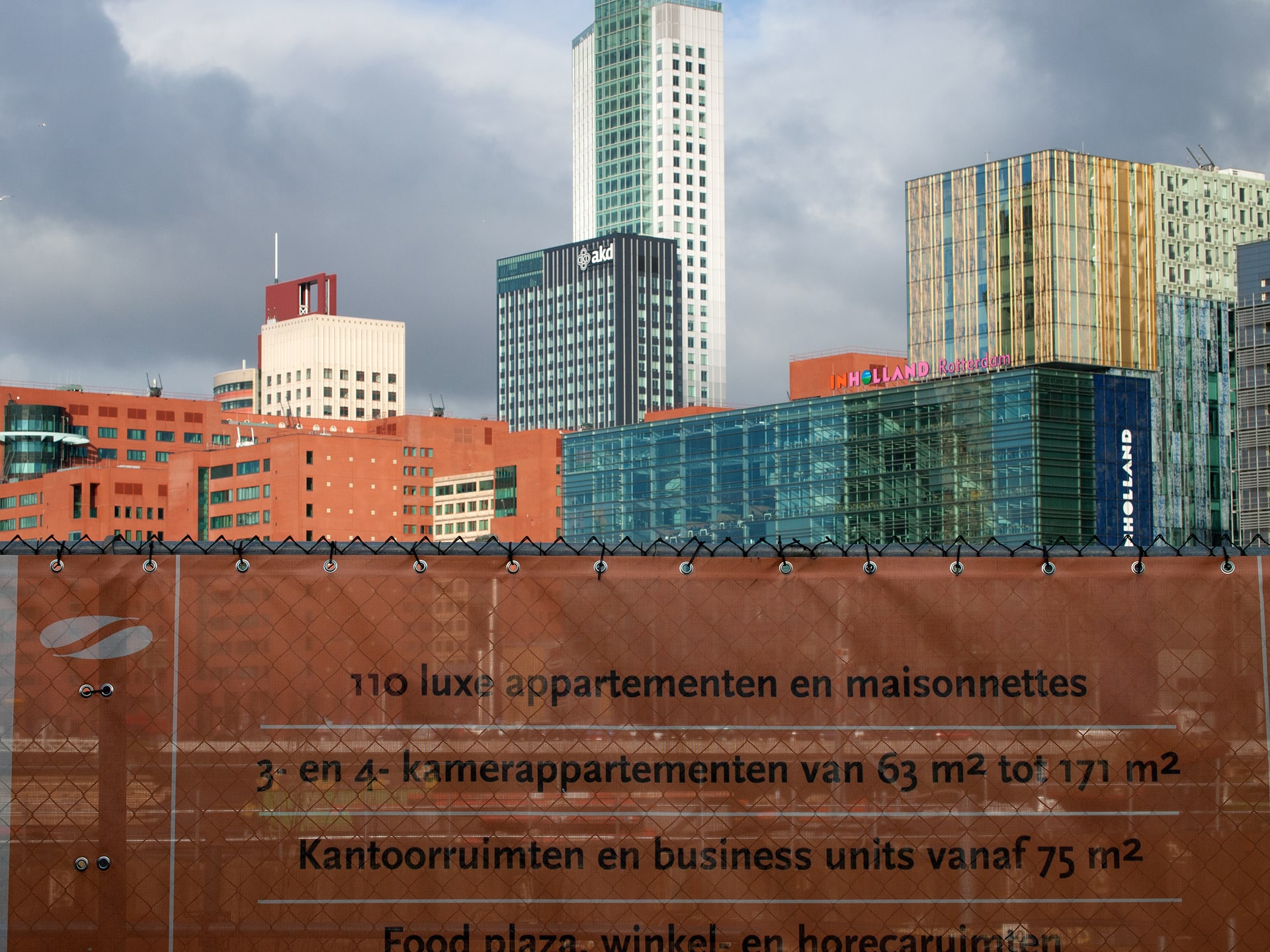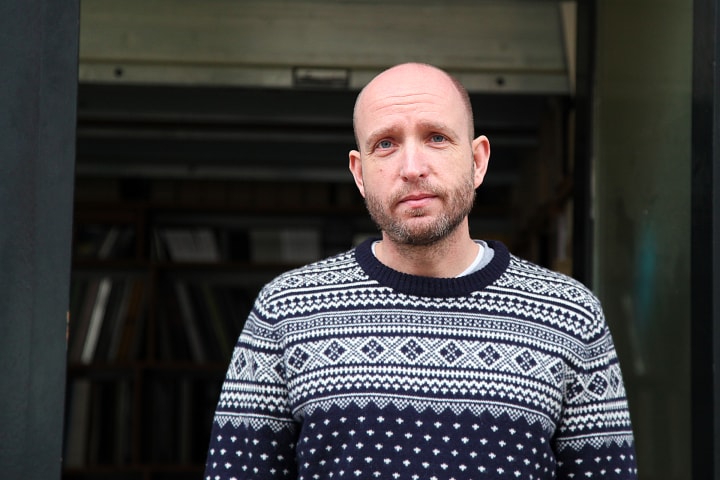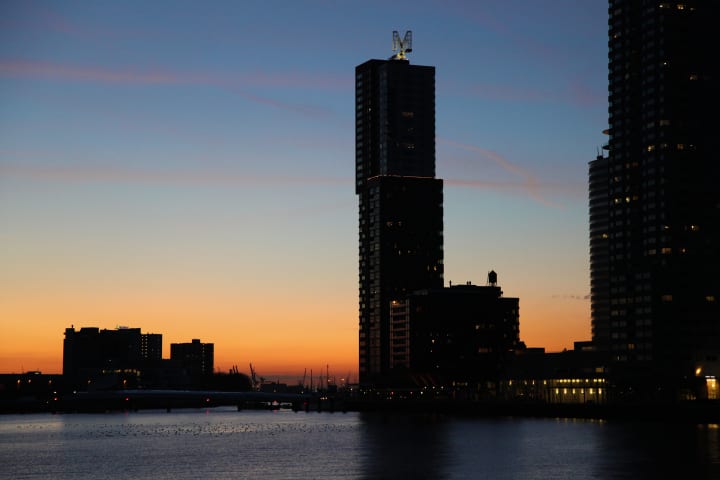
How Techno and Gabber Developed in Rotterdam
There’s something positively Blade Runner-esque about Rotterdam. The Netherlands’ second-largest city is unabashedly shaped by ultra-modern, futuristic architecture—an urban landscape of oblique angles and form-follows-function aesthetics. It’s a utopian spirit of spatial experimentation impressively woven in and around decrepit port buildings, the Nieuwe Maas and various multiethnic neighborhoods. Previously known as the “City without a Heart” (after the Germans bombed it to smithereens during World War II), Rotterdam today boasts nothing less than a visionary artistic soul. In a multi-part series of interviews, we explore a day in the life of some of the people behind its creative center. First up is Serge Verschuur, the don of heavyweight label and distribution network Clone.
Serge Verschuur — Clone Records
“I grew up on an island off the southern coast of Holland called Schouwen-Duiveland, which is a hugely popular tourist destination here. It’s kind of like the Dutch version of Rimini, where loads of Rotterdammers have their vacation homes. There was and is a pretty big party scene there, with the island’s six clubs open, like, five months a year, pretty much every day…even though there are only around 2,000 permanent residents.
But before I could really go out, it was radio that got me hooked on electronic music. As you well know, in the pre-Internet era, it was easy for things to remain underground and obscure. And the only way to really hold onto what you heard on the radio was to tape it. Believe me, I taped almost everything. I mean, back then, you would often only hear a song once, and if you didn’t hear the DJ say who it was by, it was gone forever. And if the song was good, that was a minor tragedy. I always, always felt drawn to the things on the radio I didn’t hear very often.
During breaks in school, the teachers would allow us to play music over the school sound system, which was piped through the hallways of the entire campus. Fridays were the best because the night before I had recorded Ferry Maat’s now legendary Soulshow, and he always spun the latest American imports—mostly a really exquisite mix of soul, hip-hop, R&B, and disco. This was stuff that wasn’t even going to be released in Europe until, like, two months later, so it always had for me an air of importance. We’re talking the early ’80s, which is really when dance music started in Holland.

Initially it was all about Chicago house. But back then, there weren’t all of these different sub-genres of electronic music. When you went out, you really heard everything. ’91 is when we started hearing the first harder techno stuff coming out of Detroit with Jeff Mills, Underground Resistance and all that. And then immediately the Dutch variations on hard techno began, which is really how gabber first came about.
It was never really my thing, but I used to include it in my sets, because it was just so damn popular. I’d spin Robin S. on 45, mix it with some gabber, and then both the girls and guys would be happy. Eventually, it developed into a kind of rivalry between harder styles like gabber and more mellow stuff like straight-up house. Mellow versus hard. I never liked the genre split, so I always just played whatever I wanted—B12, Evolution, Planet E stuff, good obscure US house…I managed to get away with playing whatever sounded good, regardless of stylistic consistency.
Even at Parkzicht, which is where gabber was born here in Rotterdam, the DJs started out playing all Plus 8 acts, Richie Hawtin and lots and lots of Detroit stuff with aggressive 909s. That’s really how the divisions began. It wasn’t until the early ’90s here when people started going to clubs to hear only gabber or only mellow. When gabber and hardcore techno started getting bigger, other electronic music automatically became more underground. I started Clone because I saw this huge gap in techno that needed to be filled. Stuff that was good but wasn’t so obviously ‘hard’ or ‘soft’ didn’t get released here, and that’s where I came in and started putting stuff out like, say, Theo Parrish.
In my mind, there’s also a natural connection between cities like Rotterdam and Detroit—as well as Berlin. These are cold, dark and harsh places, and to me, that’s reflected in the techno these cities generate. Also, when I have artists visiting Rotterdam from Detroit, they always tell me they feel at home because there are so many people of color here. It’s perfectly normal not to be white in Holland, and that’s something most Dutch people feel proud of.
When I’m DJing abroad and I tell people I’m from Holland, they always tell me how much they dig Amsterdam. When I tell them I’m from Rotterdam they just kind of nod politely and continue talking about Amsterdam. I suppose that’s understandable, because Amsterdam is a place where it’s easy to feel comfortable wherever you are in the city; it’s just so damn beautiful. Here, it’s easy to end up in a neighborhood where you don’t feel comfortable—that is, if you’re wandering around without a clue. The city has an edge, and it has so many different faces.
After the port started expanding and shipping and transportation switched from unwieldy packages to containers, a lot of the warehouses and storage spaces were left abandoned, which created this eerie emptiness in the middle of the city. That’s now starting to be filled with more residential areas and cultural institutions, which is, in my opinion, an excellent development. This isn’t the kind of ugly gentrification people complain about in other cities. This is people being able to live comfortably in the city center instead of flocking to the suburbs.”

This article originally appeared in the Winter 2011/2012 issue of Electronic Beats Magazine. Click here to read more from the magazine.
Published September 29, 2015.
